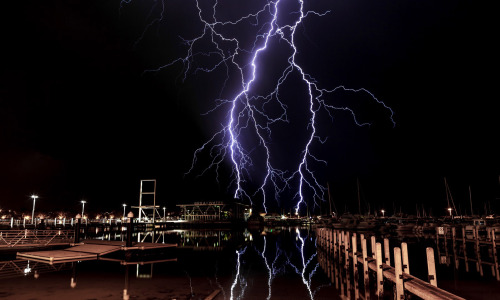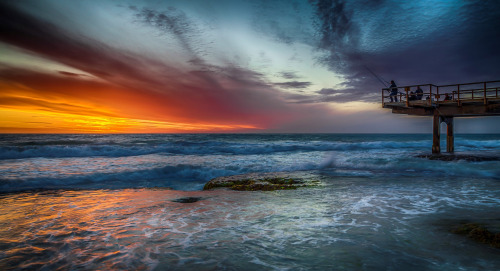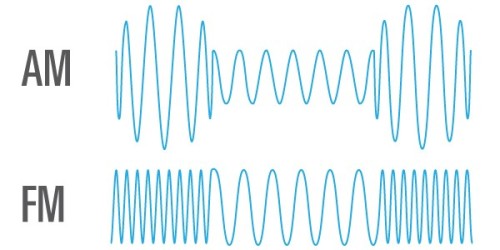“This IPhone You’re Interacting With Isn’t A Mysterious Piece Of Magic That Just Appeared In Your
“This iPhone you’re interacting with isn’t a mysterious piece of magic that just appeared in your hands. Engineers designed it, and engineers made it, and everything that it does somebody had to figure out how to make.”
Chris Bradfield
More Posts from Thekrishankumar and Others

Macchu Picchu is not a Pokemon.
"Macchu Picchu I choose you!" (via wtfparentingquotes)



Storm chaser down under
A British photographer made the lightning decision to quit the UK to chase storms Down Under and was rewarded with these striking shots. Oliver Kay, 40, left his dead-end IT job in Manchester almost a decade ago with wife Helen in search of a new life in Perth, Western Australia. He mixes a job with one of Perth’s biggest mining companies with his weekend passion of photography. And Oliver struck gold after being woken up by thunder at 3.30 in the morning and taking amazing pictures of lightning filling the sky above Hillary’s Marina in his adopted home city. (Caters News) Photography by Oliver Kay
See more storm photos and our other slideshows on Yahoo News.

You've Pasted An Image URL Into A Post. What Happens Next Will Shock You.
Copy the URL of an image you own. Paste that URL anywhere in the text of a post. Watch how that URL doesn’t even show up. Watch how — ♫ whap ♫ — your image shows up instead.

An invisibly delightful convenience. Enjoy.

AM & FM: How Radio Works
Lately I’ve been thinking about how the things I use every day actually work, and since I listen to a lot of podcasts, you can guess where this post is going: radio.
In a studio, a microphone converts sound waves from a person’s voice into an electronic audio signal. If this was sent out by itself, it would only travel a few metres in air before it faded out. To get radio waves to travel long kilometres to a receiver, we have to combine it with a “carrier wave”—an electromagnetic wave.
Electromagnetic waves are made up of oscillating electric and magnetic fields, just like visible light, but radio waves are right down on the lower end of the spectrum, so their wavelengths are very long—around 300 metres.

(Image Credit: NASA)
Sound information is combined with the wave by altering or modulating the wave’s properties, like changing its amplitude, frequency, or phase. There are two ways to combine the audio signal with the carrier wave: amplitude modulation (AM) or frequency modulation (FM).
AM radio changes the overall amplitude or strength of the wave, varying its height in order to incorporate the sound information. FM radio works a little differently, because it changes the frequency of the wave rather than the amplitude. The frequency is the number of wavelengths that pass by a given point per second—physically, a high frequency wave would look squashed up, and a low frequency wave would look stretched out.

(Image Credit: Wikimedia Commons)
Both kinds of waves are susceptible to variations in amplitude as they zoom off through the air, but since FM radio relies on changes in frequency rather than amplitude, these variations don’t matter—they can just be ignored, and so the sound quality is usually super clear. But AM radio relies on the amplitude to convey information, so when the amplitude is varied a bit, this results in interference or static, which will be a familiar idea if you’ve ever listened to AM radio on a rural country road. The upside of AM radio is that it travels much further than FM radio, which is probably why you’re listening to it on that rural country road in the first place.
So once these radio waves—whether AM or FM—hit a radio receiver, their oscillating fields induce a current in the conductor. The sound information encoded into the waves can be extracted, and converted back to sound waves to grace your ears with your favourite music or talk show.
(Bonus: if you want to use science to learn more cool science, my fave podcasts are Radiolab, the Infinite Monkey Cage, and Big Picture Science.)

San Bernardino: The latest site for America’s unending gunfight




Walking through the crowds - Nov. 6, 2014
Many New Yorkers don’t like the way tourists stop in the middle of sidewalks to take pictures of the city’s great landmarks. But, on the other hand, people commute each day to Manhattan and don’t see the beauty around them as they march to their cubicles. On his way to the office today, Yahoo News photographer Gordon Donovan stopped to photograph some of these items. It was raining, so Gordon broke out his macro lens and focused down on some raindrops. (Yahoo News) Find more news related pictures on our photo galleries page and follow us on Tumblr.

16, I love Technology & Science Stuff . krishan@krishankumar.me
82 posts
